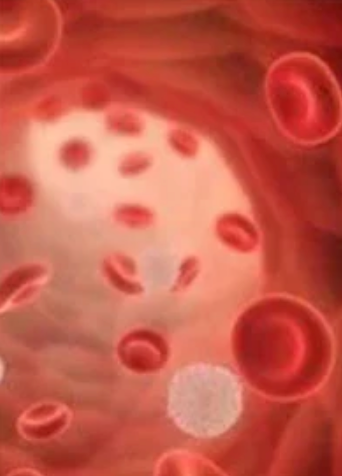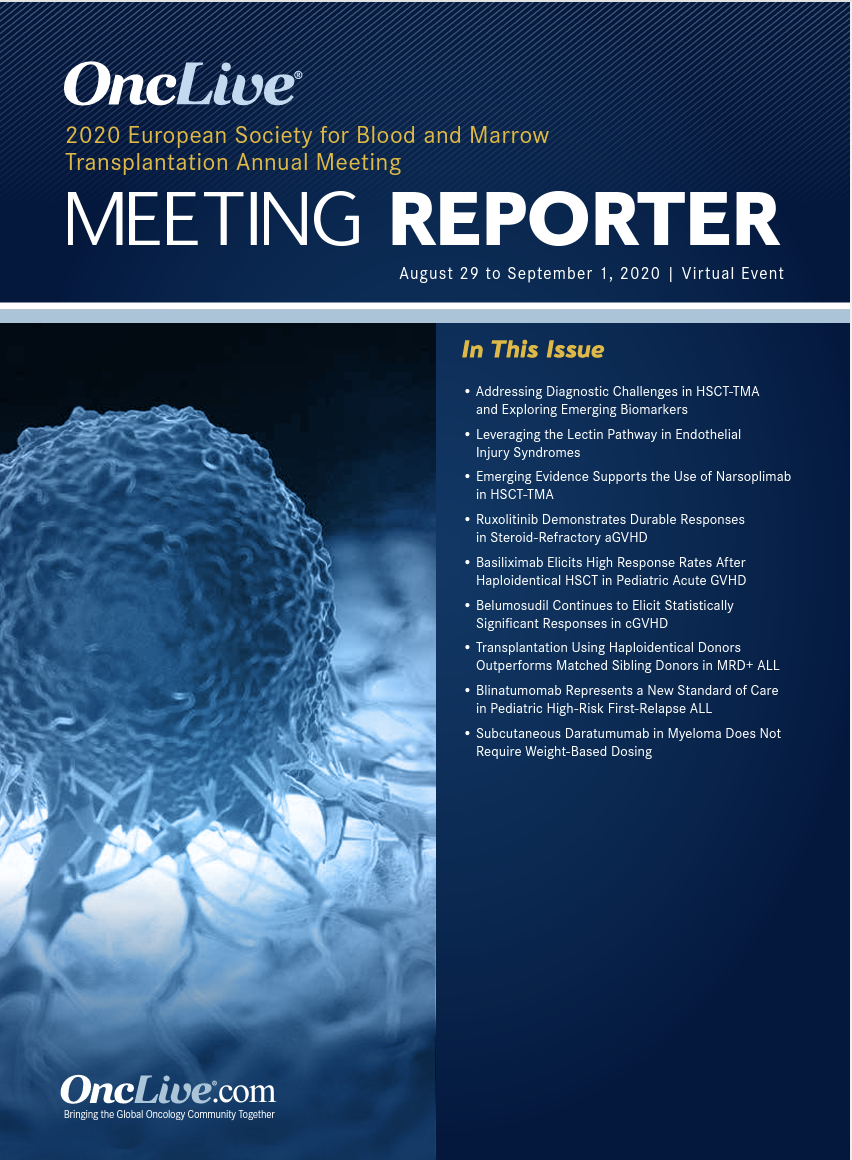Publication
Article
Transplantation Using Haploidentical Donors Outperforms Matched Sibling Donors in MRD+ ALL
Author(s):
Haploidentical donor transplantation led to stronger anti-leukemia activity compared with matched sibling donor transplantation in transplant-eligible patients with minimal residual disease–positive acute lymphoblastic leukemia.

Haploidentical donor transplantation (HIDT) led to stronger anti-leukemia activity compared with matched sibling donor transplantation (MSDT) in transplant-eligible patients with minimal residual disease (MRD)–positive acute lymphoblastic leukemia (ALL), according to results from a study reported during the 2020 European Society for Blood and Marrow Transplantation Annual Meeting.1
Results showed that the cumulative incidence of MRD positivity following transplant was 26% (95% CI, 19%-33%) with HIDT versus 44% (95% CI, 28%-60%) with MSDT. Additionally, the 3-year cumulative incidence of relapse (CIR) was 2-fold higher in the MSDT cohort compared with the HIDT cohort, at 47% (95% CI, 31%-63%) versus 23% (95% CI, 17%-29%), respectively (P = .006).
Moreover, patients who underwent MSDT also experienced a lower 3-year probability of leukemia-free survival (LFS) compared with those who underwent HIDT, at 65% (95% CI, 58%-72%) versus 43% (95% CI, 27%-59%), respectively (P = .023), thus meeting the primary end point of the study.
By multivariate analysis, HIDT was shown to be significantly associated with low CIR (HR, 0.364; 95% CI, 0.202-0.655; P = .001), improved LFS (HR, 0.414; 95% CI, 0.246-0.695; P = .001), and prolonged overall survival (OS; HR, 0.380; 95% CI, 0.220-0.656; P = .001).
“Haploidentical donors have become an alternative source for allogeneic stem cell transplantation for patients who require [the procedure] but have no related or unrelated donors with matching human leukocyte antigen (HLA),” explained Ying-Jun Chang, MD, professor of Health Sciences at Peking University Institute of Hematology Peking University People’s Hospital, in a presentation during the meeting.
“HLA-identical sibling donors remain the first choice, although several studies have shown that treating patients with ALL using haploidentical donors could achieve comparable outcomes to those who undergo HLA-matched sibling donor transplantation,” added Chang. “On the other hand, using haploidentical transplants, the graft-versus-leukemia effect may be stronger, as mismatches for HLA antigens on leukemic cells would provide allo-immune targets.”
In the prospective, biologically randomized phase 2 trial, Chang and colleagues set out to further evaluate the benefit associated with HIDT versus MSDT. The trial enrolled patients with ALL who achieved a complete remission following chemotherapy but had MRD prior to transplantation. MRD was confirmed by multiparametric flow cytometry in all patients before and after transplantation.
A total of 208 patients with MRD positivity prior to transplantation were included in the analysis; 169 were genetically randomized to HIDT and 39 patients were randomized to MSDT. Prior to transplantation, all patients received the same myeloablative conditioning regimen previously used by the study investigators.2
The recipients of HIDT and MSDT were comparable in terms of gender, time from diagnosis to HSCT, disease subtype and status, as well as pre-transplantation MRD levels; however, they differed in terms of age. In the HIDT cohort, 63.3% of patients were male with a median age of 24 years; the median level of pre-transplant MRD was 0.07% in this group. The patients in the MSDT arm were older, with a median age of 35 years, and 53.8% were male; the median pre-transplant MRD level in this group was 0.5%.
LFS served as the primary end point of the trial, while key secondary end-points included engraftment rate, the cumulative incidence of MRD following transplantation, relapse, non-relapse mortality (NRM), OS, as well as the incidence of acute graft-versus-host disease (GVHD) grades II-IV and chronic GVHD.
All patients provided bone marrow aspirate samples at the baseline assessment prior to transplant and at approximately 30 to 180 days following transplantation; these samples underwent clinical testing by 8-color MFC.
Additional results from the trial showed that the 100-day cumulative incidence of platelet engraftment in the HIDT group was significantly lower than that in the MSDT group, at 95% (95% CI, 92-98%) versus 100%, respectively (P < .001).
However, the 100-day cumulative incidence of acute GVHD grades II-IV was similar between the cohorts, at 21% (95% CI, 17%-27%) with HIDT versus 23% (95% CI, 10%-36%) with MSDT ( P = .884); this was true for patients with grade III-IV GVHD, as well, at 6% (95% CI, 3%-9%) versus 5% (95% CI, 0%-12%), respectively (P = .838). In addition, the 3-year cumulative incidence of total chronic GVHD was also comparable between the HIDT and MSDT groups, at 44% (95% CI, 36%-52%) and 48% (95% CI, 31% vs 65%), respectively (P = .850); the same held rue for moderate to severe chronic GVHD, at 18% (95% CI, 10%-26%) versus 27% (95% CI, 10%-44%), respectively (P = .192).
Overall survival (OS) also significantly favored HIDT; specifically, the 3-year probability of OS with HIDT was 68% (95% CI, 61%-75%) versus 46% (95% CI, 30%-62%) with MSDT (P = .039).
NRM rates were comparable in both groups at 10% with HIDT versus 11% with MSDT (P = .845).
“The current study paves the way to determine that haploidentical donors are the preferred choice regardless of available matched sibling donors in a subgroup population,” the study authors concluded.
References
- Chang Y-J, Wang Y, Xu L-P, et al. Haploidentical donor beats matched sibling donor for pre-transplantation MRD positive ALL: a phase 3 genetically randomized study. Presented at: 2020 European Society for Blood and Marrow Transplantation Annual Meeting; August 20-September 2, 2020; Virtual. Abstract O103. https://bit.ly/3m8TING.
- Wang Y, Liu Q-F, Xu L-P, et al. Haploidentical versus matched-sibling transplant in adults with Philadelphia-negative high-risk acute lymphoblastic leukemia: a biologically phase III randomized study. Clin Cancer Res. 2016;22(14):3467-3476. doi:10.1158/1078-0432.CCR-15-2335









